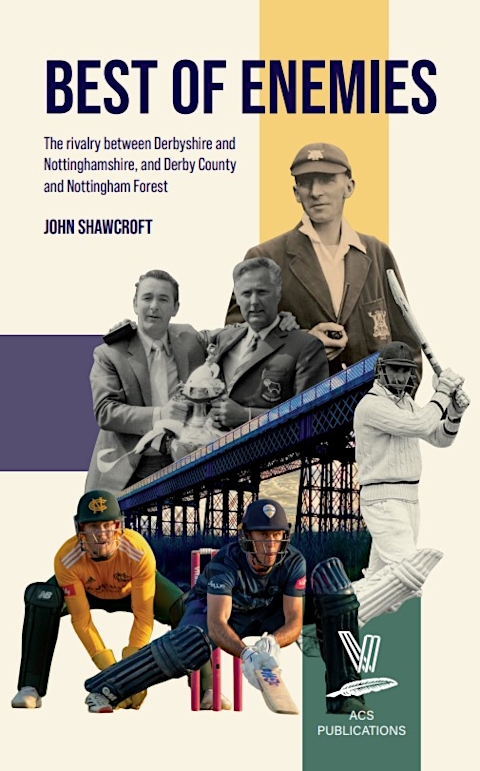He is, after all, the doyen of Derbyshire cricket writing. He first started watching the county in 1946, the same year that my late father started attending county matches. Dad had been to see Derby County in some wartime football and was thereafter a lifelong fan of both sides.
That love was passed on to me, first seeing the Rams in 1966, after I had enjoyed England's World Cup win, then the cricket club in the summer of 1967. The rest, as they say, is history.
I was born at Ripley, but we moved across the border into Nottinghamshire, to be nearer to Dad's work at Bentinck Colliery, in 1969. I was the only Derby/Derbyshire fan at my school, so know all too well the rivalries that matches between the sides created.
I'm not sure if people still do what John recounts in this book, but plenty would go to see Derby when they were at the Baseball Ground, then the next week go to the City Ground. Maybe not, with travelling easier today, but we did for a while, before Dad realised my loyalties were firmly on the black and white side. As were his, but he gave me the choice, like the good Dad he was.
John Shawcroft's book is engaging, well-written and informative. For example, I had no idea that Derbyshire had attempted to sign Ted Alletson, he of the legendary 189 against Sussex at Hove in 1911. Nottinghamshire refused to release him, but his career ended with the First World War anyway.
I would have loved to have seen matches between Derbyshire and Nottinghamshire in the decade before the Second World War. For the first time, Derbyshire were equal in stature and quality, but matches were hard-fought, well-attended and largely attritional. No quarter asked for nor given, by two sides whose players were largely drawn from the county borders. Many of them played in the Bassetlaw League and worked alongside those watching in the winter months, a dark coal mine a poor substitute for a sunlit cricket ground.
Played at Ilkeston too, a proper ground, handy for both sets of supporters and capable of creating a stadium-like atmosphere from both sets of partisan support. Like the author, I enjoyed trips to this ground and mourn its passing
The historic names from both clubs are part of my childhood learning curve. Tom Wass of Nottinghamshire lived in neighbouring Sutton-in-Ashfield, as did Tim Robinson later and many more in between and the area was a hotbed of cricketing talent and cricket clubs. I found it hard when I first moved to Scotland, travelling for upwards of an hour for fixtures, being used to fifteen minute, often less, journeys in the local leagues.
In more recent years, Nottinghamshire have dominated fixtures between the sides, as the financial gap between them has widened to disproportionate levels. Yet the fixtures are still eagerly anticipated and victory is still celebrated the same, bragging rights enjoyed by both sides.
I suppose the only people who wouldn't enjoy this book are those who don't follow one of the sports. But the tales of heroes in both red and white are equally stirring. My earliest memory of the fixture was 1969, when Forest came to Derby and won 2-0, largely thanks to a masterclass in defending from Terry Hennessey, who later would join the Rams, his career then sadly curtailed by injury.
The Clough and Taylor era naturally gets good coverage, even though Brian's greatest feats were to be achieved at the 'wrong end' of the road...
As always, books published by the Association of Cricket Statisticians and Historians are done to a high standard. I especially enjoyed the generous font size and the 'bite-sized' chapters, which are well arranged in flitting between the two sports.
In short, it is a must read. Whichever side of the A52 you support, there is something for you in this engaging and thoroughly enjoyable book. Get it on your Christmas list, if you can wait that long.
Best of Enemies is written by John Shawcroft and published by ACS Publications.

Good news! John Shawcroft is an excellent writer on Derbyshire cricket and, no doubt, this will be another good read. His book ‘Local Heroes’ describing the Derbyshire side that won the County Championship in 1936 is still a firm favourite of mine.
ReplyDeleteNudger